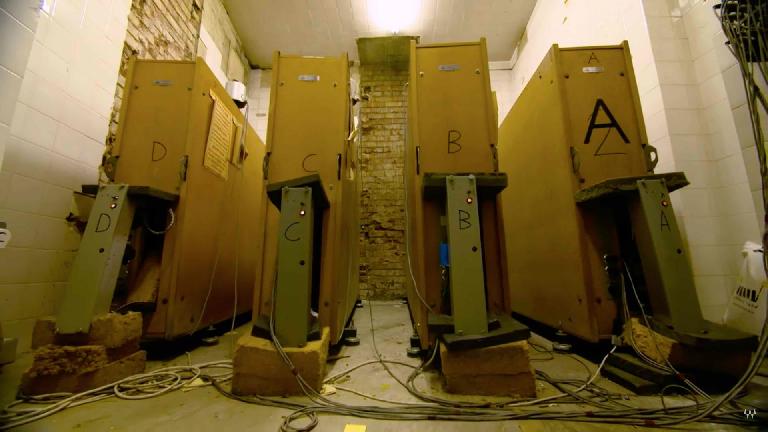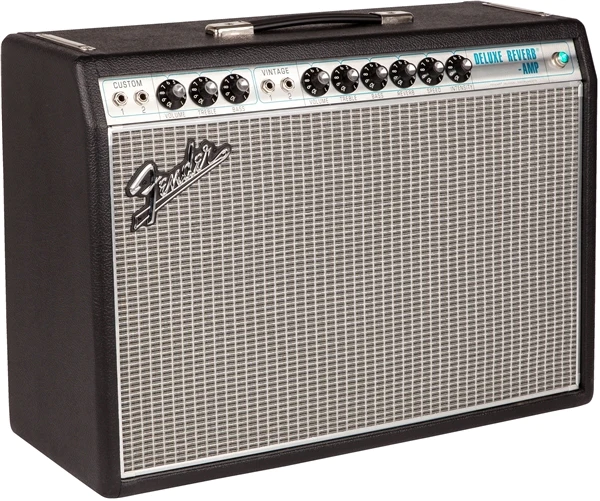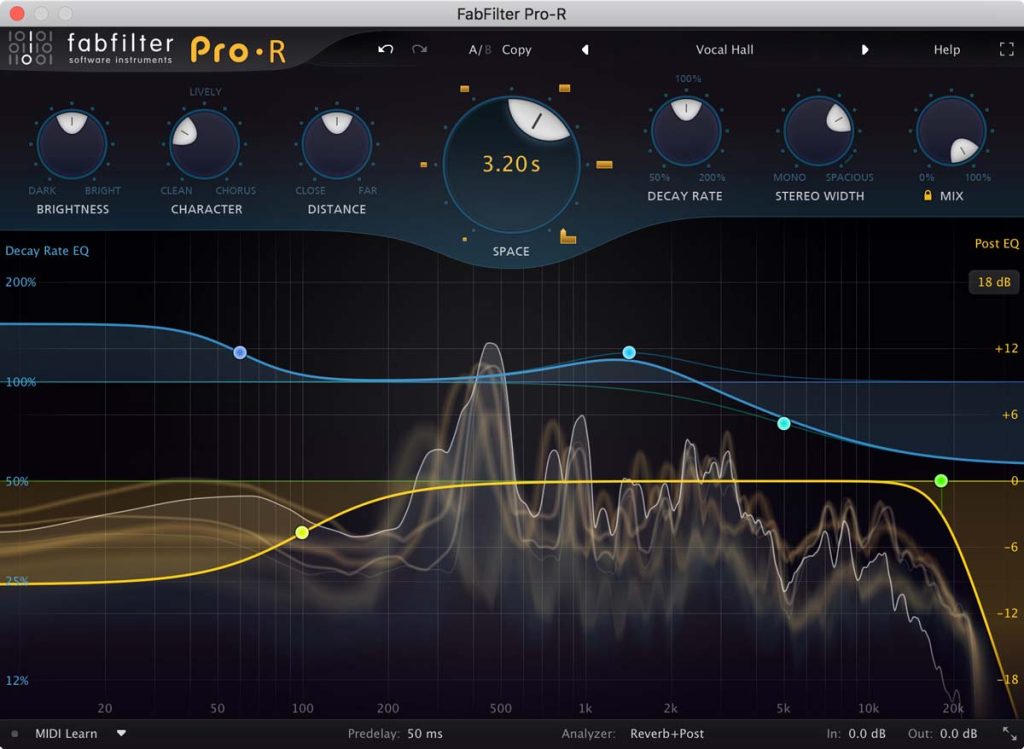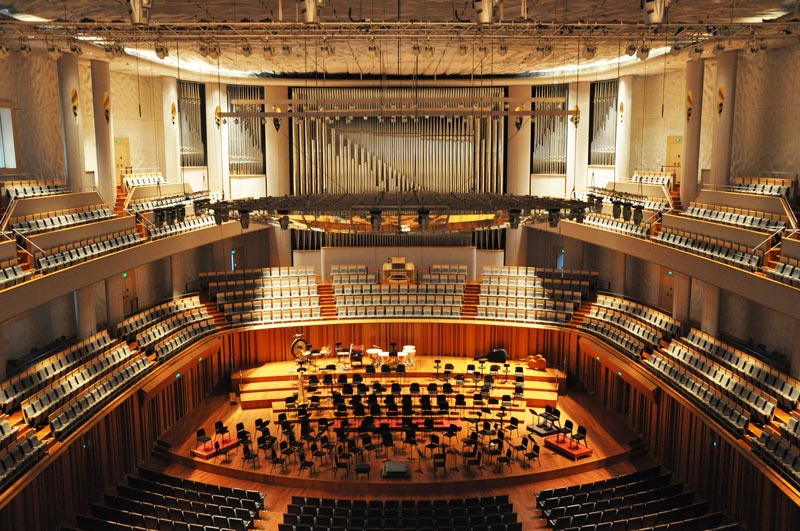Oftentimes when we listen to music, we hear some sounds that have this kind of “echo” effect in our ears, like a sound made in a large and empty hall. The sound echoes and decays, and feeds us with some sort of angelic vibe. To achieve this dreamy wet sound, musicians and producers use an effect called “reverb”, which is one of the most popular and most important instrument effects in the music industry today. This article will explore how reverb works, along with its effect throughout music history.
First, let’s look at how a reverb effect in music production is used. Before digital audio workstations and instruments were widely available in the music production market, physical methods were used for the artificial reverb effect followed by physical reverb modules that were used during recording sessions. The first creative use of reverb was recorded in 1947 on the track “Peg O’ My Heart” by The Harmonicats, with the help of Bill Putnam Sr., one of the pioneers of audio engineering in the music industry. Putnam’s reverb effect was achieved using a loudspeaker in a studio bathroom during the recording phase. This technique would later be known as “chamber reverb”, which needs an empty room that is often underground and made of concrete which, also depending on the shape and size of the room, allows for a bouncy decaying sound to be created from the source material, therefore achieving the reverb effect physically (Brown, 2020).

The ability to manipulate this reverb effect with various isolated rooms and the increasing demand to use this effect without needing the use of an isolated room which was an expensive way, led to the development of mechanical reverb units. The most known examples of these reverb units are spring and plate reverbs. Spring reverbs use the vibration of metal springs and wires by the audio source, while plate reverbs use the vibration of metal plates inside the units to achieve the synthetic reverb effect. Laurens Hammond, one of the pioneers in the development of these mechanical reverb units, also developed a way to use the spring reverb system in guitar amplifiers in the early 1960s, and also in modular synthesizers in the following years (Brown, 2020), leading to easier and more customizable experimentations with this effect in many different music genres such as pop, rock and electronic music.

Speaking of music genres, let’s also take a look at how reverb was used for iconic sounds in different musical styles and examples. One of the notorious examples of the use of reverb for a particular sound can be observed via gated reverb snares, which is one of the key elements of 1980s pop music. If you are a fan of 80s synthpop groups such as New Order, Depeche Mode and Pet Shop Boys, you should already be familiar with the gated reverb snare sound. Originally (and accidentally) invented by Peter Gabriel and Phil Collins in 1979 (Williams, 2020), the gated reverb snare uses a gate compressor which cuts the audio signal based on a given threshold after the reverb effect, and is one of the most iconic sounds of 1980s synthpop music and it is still used today, especially in genres such as synthwave which revolve around the 80s nostalgia. Some of the nice nostalgic examples I can think of to hear this iconic snare are New Order’s “Bizarre Love Triangle”, Depeche Mode’s “Everything Counts” and Pet Shop Boys’ “Heart”, and if you would like to check out some modern examples, M83’s “Midnight City” and FM-84’s “Running In The Night” use this gated reverb snare effect in a really tasty way.

Fast forward to 1990s, we can see the development of a new musical genre called “shoegaze”, which gets its name from guitar players who use effect pedals with their feet heavily during their performances and thus looking at their feet pretty often. Reverb was one of those effects that gave shoegaze tracks a distinct and angelic sound. There are two important shoegaze albums that use reverb at its core, which are My Bloody Valentine’s “Loveless” and Slowdive’s “Souvlaki”. In tracks such as “Loomer” and “I Only Said” from My Bloody Valentine’s acclaimed album “Loveless”, the use of reverb on distorted guitars to fill in the empty spaces can be heard. In the album “Souvlaki”, the heavy use of reverb on guitars can easily be heard in tracks such as “Machine Gun” and “Sing”, which also combines other popular guitar effects such as flanger, which duplicates the audio signal and delays one of the signals in a small amount to make it sound slower, with reverb. Furthermore, to give a recent example as well, the guitars on the track “Honeycomb” by Deafheaven, a post-metal band which incorporates shoegaze and black metal elements in many of their tracks, also benefit from the reverb effect to fill in the soundscape and also create a warm and relaxing vibe, especially in the second half of the track.

In modern electronic music, we can see two amazing subgenres of vaporwave which benefit a lot from reverb like shoegaze: dreampunk and mallsoft. 2814’s second studio album “Birth Of A New Day”, which is one of the most important dreampunk albums of all time, uses reverb in many elements of its tracks such as atmospheric pad synths and even percussions to give the whole album a dreamy feel, like an astral journey in a Far East country while its raining outside, and when all of this takes place in the future, though it is up to you to decide whether it is utopian or dystopian. A great mallsoft example to give is Cat System Corp’s album “Palm Mall”, which uses reverb to create the atmosphere of a shopping mall from the 1980s while keeping it ethereal and nostalgic. In addition, since vaporwave is often reminiscent of the 1980s, many vaporwave works use gated reverb snares as well, with one of the notable examples being Luxury Elite’s nostalgic high life inspired album “High Society”.

With further developments in music technology and commercial music production programs, physical reverb units eventually gave place to digital reverb plugins in most cases. Today, almost all of the digital audio workstations come with stock reverb plugins that are ready to be used in productions, and there are tons of third-party reverb plugins available in the plugin market that can be used in any digital audio workstation. Some of these reverb effects have different characteristics. For example, convolution reverbs can be used to simulate large rooms and halls such as cathedrals by processing the audio signal with real world recordings from these places that have physical reverb potential (Output, 2021). There are also algorithmic reverbs that are based on mathematical models which use complex delays and modulations in a chain to replicate spaces and even create supernatural effects (Bock, 2022). Though, if these developments sound too futuristic, there are also emulations of analog reverbs, notably plate reverbs, to put that vintage touch on the track.

In conclusion, the reverb effect allows the instruments to fill in the blanks, create dreamy and ethereal atmospheres and even develop iconic sounds from happy accidents, making it play a crucial role in many popular tracks and styles throughout music history. It is an amazing audio effect that can help mixes in small quantities and augment compositions in large quantities, though it always depends on the context.
References:
Bock, C. (2022) What is an algorithmic reverb?, BABY Audio. BABY Audio. Available at: https://babyaud.io/blog/what-is-an-algorithmic-reverb#:~:text=Algorithmic%20Reverb%20defined&text=In%20an%20algorithmic%20reverb%2C%20your,%E2%80%9Csuper%2Dnatural%E2%80%9D%20space. (Accessed: November 1, 2022).
Brown, G. (2020) A history of reverb in music production, iZotope. Available at: https://www.izotope.com/en/learn/a-history-of-reverb-in-music-production.html (Accessed: November 1, 2022).
Convolution reverb 101: 7 best plugins and how to use them (2021) Output. Available at: https://output.com/blog/convolution-reverb (Accessed: November 1, 2022).
Williams, S. (2020) How Genesis’s Peter Gabriel and Phil Collins stumbled upon the ’80s gated-reverb drum sound, MusicRadar. MusicRadar. Available at: https://www.musicradar.com/features/how-genesis-peter-gabriel-and-phil-collins-stumbled-upon-the-80s-gated-reverb-drum-sound (Accessed: November 1, 2022).
